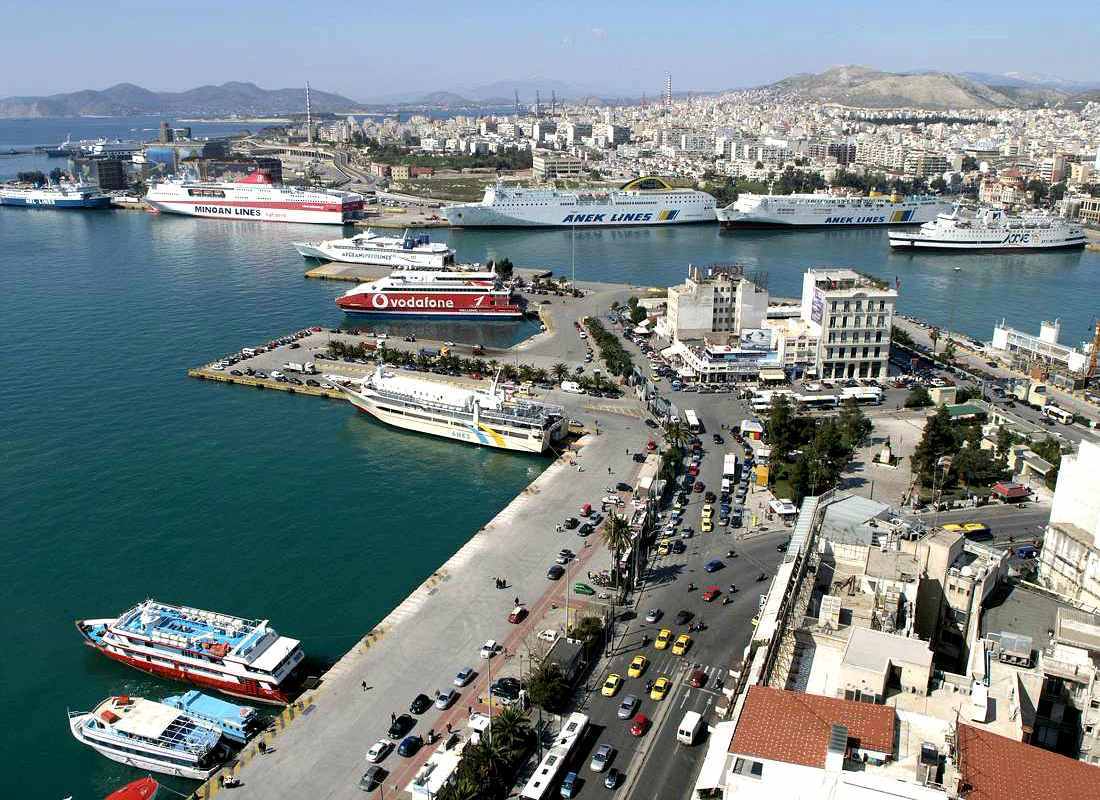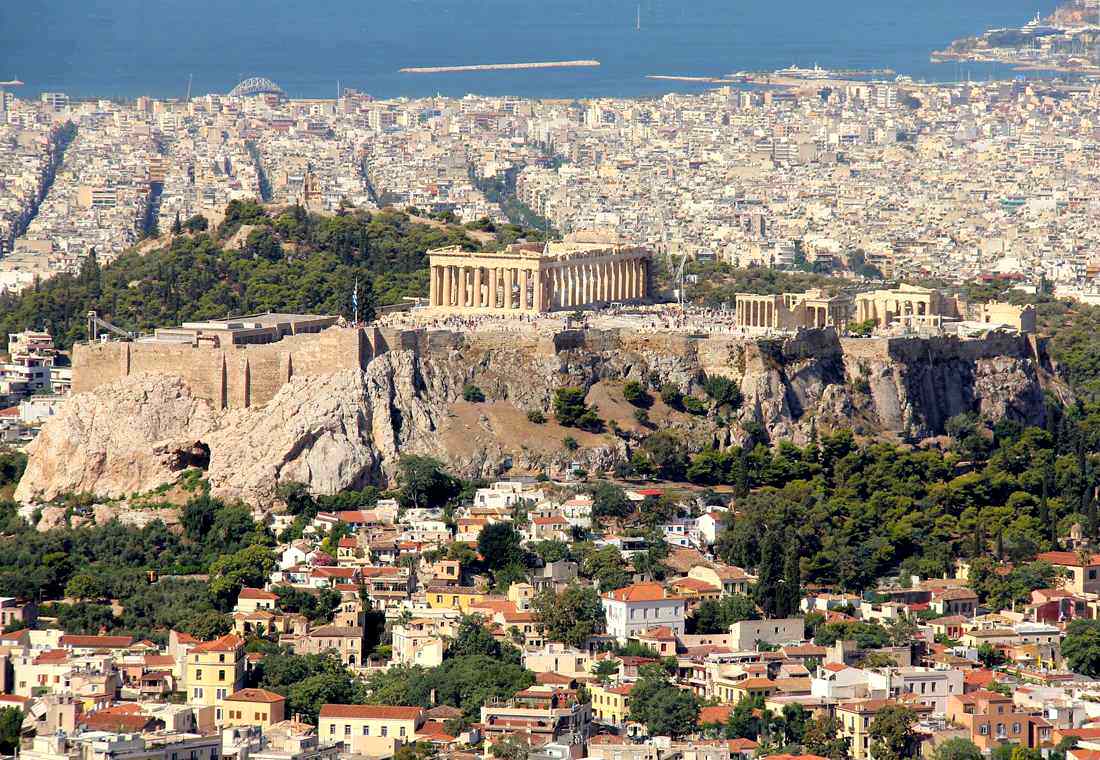
Galloping through ancient Athens
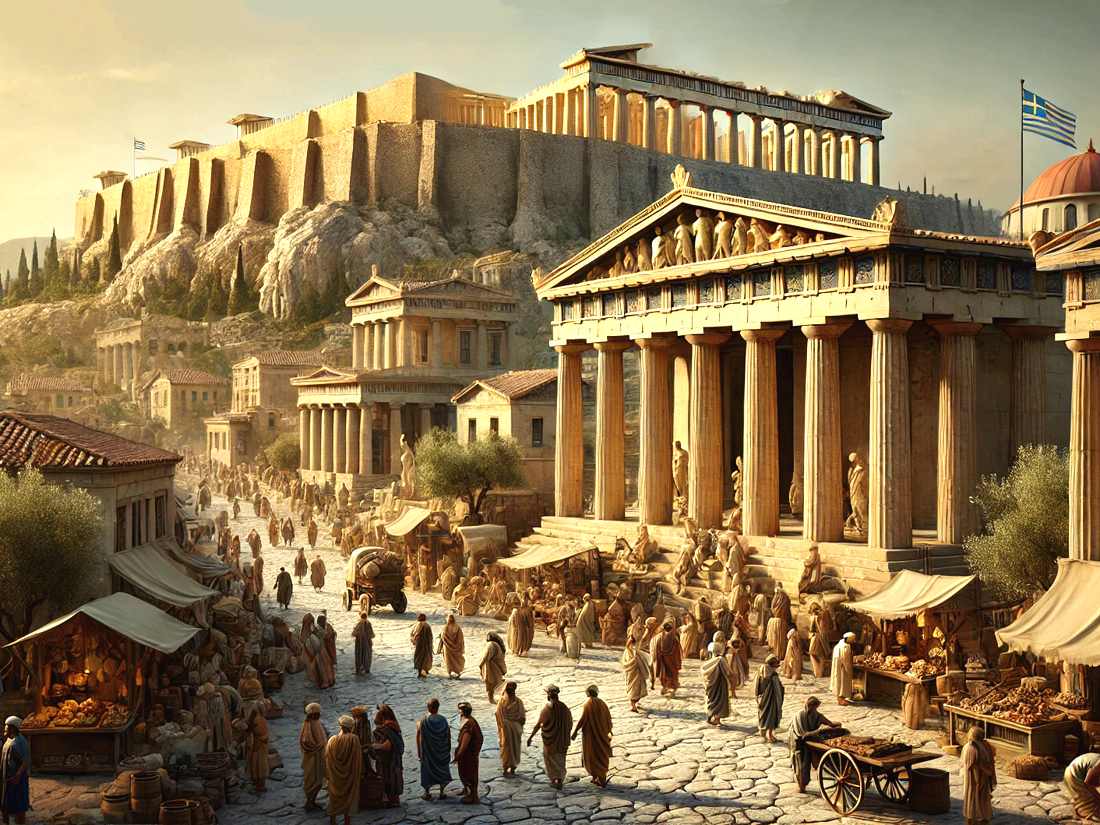
Immerse yourself in the atmosphere of ancient Athens
The “Galloping through ancient Athens” itinerary will take you in a few hours to the heart of ancient history, where each monument tells its own amazing story. Experience the grandeur of ancient civilization, walk through the narrow streets filled with the spirit of past eras and discover the secrets of this city that has inspired great people for centuries.
Itinerary
Monastiraki Square, Stoa Attala, Athenian Agora, Temple of Hephaestus, Tower of the Winds, Roman Agora, Library of Hadrian, Areopagus, Acropolis of Athens, Odeon of Herodes Atticus, Stoa of Eumenes, Socrates Prison, Philopappus Hill, Temple of Asklepios, Theater of Dionysus, Acropolis Museum, Arch of Hadrian, Temple of Zeus Olympianus, Calimarmaro Stadium
Monastiraki Square
One of the most lively and colorful places in the center of Athens. It is famous for its atmosphere, combining ancient history, oriental flavor and dynamic modern life. The square takes its name from a small monastery located here in Byzantine times. It is surrounded by historical sites including the ancient Agora, Hadrian's Library, the ruins of the Roman Agora and others. The square is known for its eponymous flea market where you can find antiques, souvenirs, jewelry, books and traditional goods. It is a popular place among tourists and locals who come here to stroll around and visit cafes or taverns overlooking the Acropolis. Thanks to its convenient location, the square is well connected to transportation and is a great place to start exploring the city.
How to get to Monastiraki Square
Stoa of Attalos
The Stoa of Attalus were built by the Pergamon king Attalus II and named in his honor. His reign dates from 159 to 138 B.C., and the erection of this structure was a generous gift to Athens, the city where he had studied. This is evidenced by an inscription found on one of the colonnades, “King Attalus, son of Attalus I and Queen Apollonides”. The structure was 115 meters long and more than 20 meters wide, and the columns rose almost 5 meters high. Compared to other similar buildings in Athens, Stoa stood out for its complex architecture and far exceeded their size. In terms of layout, Stoa was an ideal example of a public building, with colonnades protecting visitors from the wind in winter and from the hot sun in summer. In ancient Athens, the structure served as a kind of shopping center, where Athenians spent their free time, socialized, met and actively traded. Stores were located on two floors, creating a lively atmosphere of an ancient shopping center.
Ancient Agora of Athens
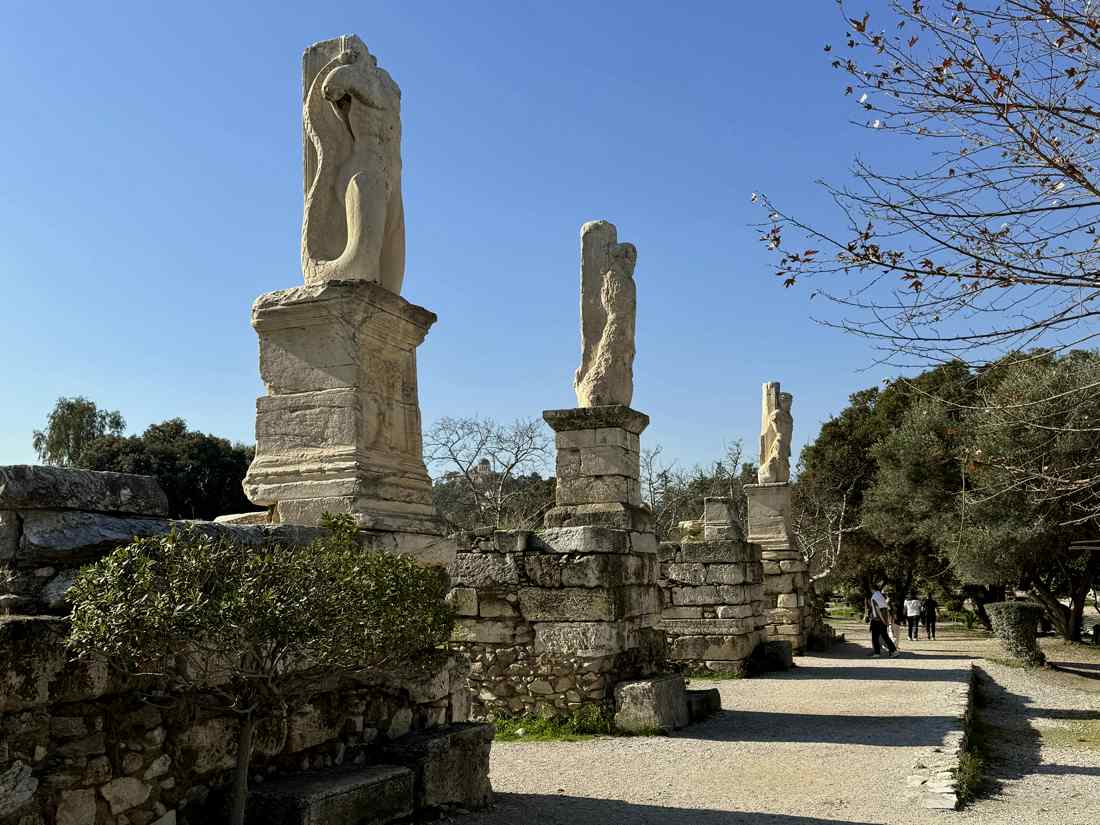
In ancient times it was a market square located in the immediate vicinity of the Acropolis. The name comes from the Greek word ἀγορά, which in turn is derived from ἀγείρω, meaning “to gather” or “to summon”. This name perfectly reflects its original purpose as a place for citizens to meet and gather. In ancient times, the Agora became the real heart of the social and political life of the city. Civil assemblies, court sessions and trade were held here. It was also the site of theatrical performances, athletic contests and lively intellectual discussions, making it an indispensable cultural and secular center of life in ancient Athens.
How to get to the Ancient Agora in Athens
Temple of Hephaestus
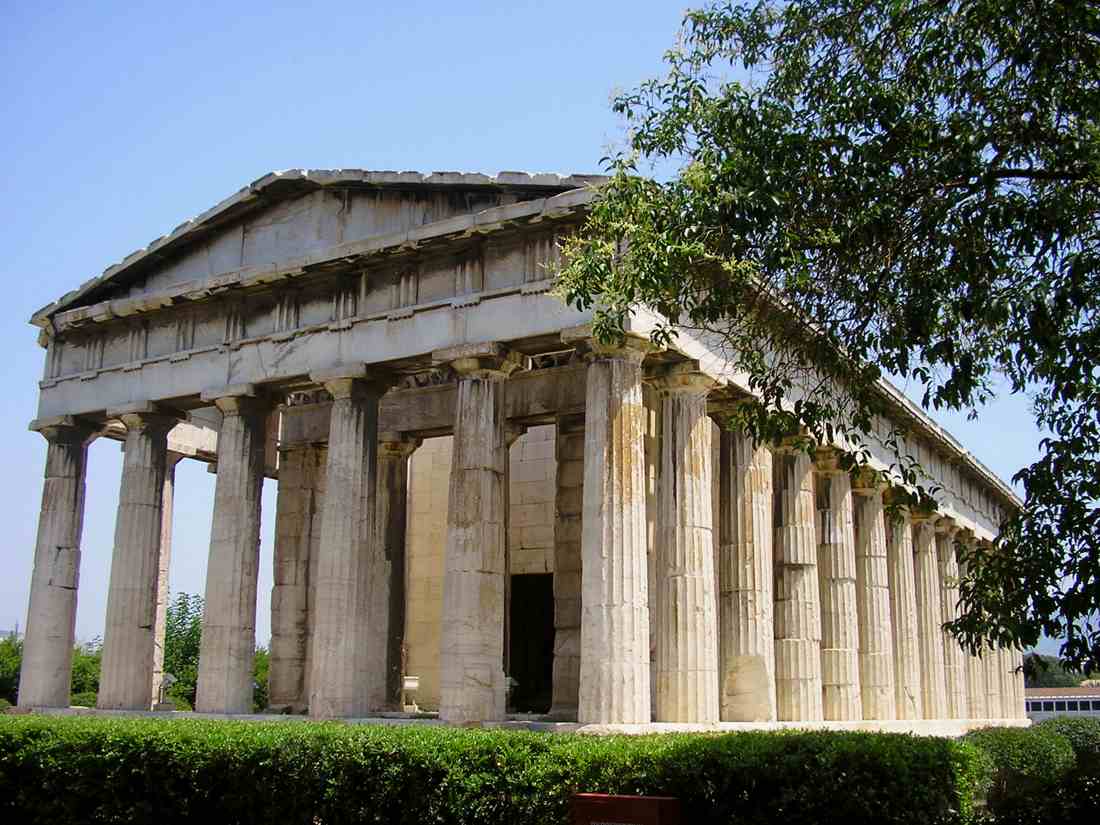
The Temple of Hephaestus is also known as Theseion and is one of the best preserved temples dedicated to Hephaestus, the god of fire, and Athena, the goddess of wisdom. It is located on the grounds of the Athenian Agora and was named “Theseus” because of an old hypothesis linking the temple to the king of Athens, Theseus. Although this version was later revised, the name was retained. It is one of the well-preserved monuments of the Agora and the most prominent Doric temple in Greece. Construction began in 449 BC and judging by the characteristics of the temple, the architect was noticeably influenced by the Parthenon on the Acropolis, which was under construction at the same time. The two-colored Doric colonnade inside the building and the Ionic zoophore, which decorated the upper part of the portico, bear a great resemblance to the Parthenon. The temple was decorated with clay pots with flowers and shrubs, and inside there were two bronze statues of Hephaestus and Athena. With the advent of Christianity in Greece and until 1834, the temple was used as an Orthodox church, and in the 7th century it was transformed into the Church of St. George of Akamas.
How to get to the Temple of Hephaestus
Hadrian's Library
One of the outstanding architectural structures of ancient Athens, built by the Roman emperor Hadrian in 132-134 A.D. Located north of the Acropolis, the library served not only as a repository of papyrus scrolls, but also as an important cultural center, including reading rooms and a lecture hall. In 267 AD, during the Herulus invasion, the building was destroyed, but in 407-412 it was partially rebuilt by the Roman prefect Herculius. During the Byzantine period, three Christian churches were erected on the site: a tetraconch in the 5th century, a basilica with three naves in the 7th century, and later a domed church, which became the first cathedral of Athens, known as “Megali Panagia”.
How to get to Hadrian's Library
Roman Agora
Ancient Roman market square built during Roman rule. Its construction began in 27 B.C. at the expense of Octavian Augustus, but the idea of its creation belonged to Julius Caesar, who proposed it as early as 51 B.C. That is why the square is also known as the Agora of Caesar and Augustus. The Roman Agora is still not fully excavated, but it is known that it was a spacious open square surrounded by a colonnade. In the southern part there was a fountain, and on the western side there were Ionic Propylaea (Gate of Athena). In the east rose Doric Eastern Propylaea, nearby was the famous octagonal Tower of Winds and public baths. In the 2nd century A.D., under Emperor Hadrian, the market was expanded, and an inscription appeared on the gates defining the tax obligations of merchants. In the middle of the XV century on the territory of the Agora erected a mosque Fethiye-Jami, which in the XVII century was rebuilt, and in 1687 the Venetians turned it into a Catholic Church. Today, the Roman Agora is a popular tourist site, where you can see monuments of different historical times.
Tower of the Winds
An octagonal tower made of Pentelic marble, located on the territory of the Roman Agora, which functioned as a clock. It is considered to be the world's first meteorological station, inside the tower were installed water clock klepsydra, as well as the classical sundial. Such a tall structure was clearly visible from any point of the Agora, so it successfully played the role of a public clock tower. Presumably the structure was built in 50 B.C., but according to other sources in the II century B.C. by the astronomer Andronicus Kirchestes of Cyrrhus. The Tower of the Winds had a scientific purpose and from the moment of its appearance immediately began to fulfill several important functions, being at the same time a sundial, a water clock and a weathervane. That it is not a myth or a fiction of scientists is confirmed by the images on the building. Each of its eight sides faces the points on the compass and is decorated with a frieze with relief figures depicting the winds blowing from that direction. The names have survived to the present day: Boreas (north), Kekius (northeast), Apeliot (east), Eurus (southeast), Notus (south), Lips (southwest), Zephyrus (west) and Skiron (northwest). Below the friezes were eight vertical sundials where the shadow was cast on the hour lines, these are still slightly visible today.
How to get to the Tower of the Winds
Areopagus
A small rock at the foot of the Acropolis, where trials were held in ancient times. According to Greek mythology, the god Ares was tried here for the murder of Poseidon's son Halirrhothius, who tried to rape Alcippe. This happened at the spring near which the temple of Asclepius was later erected. In Athens, the first murder trial took place, in which the 12 gods of Olympus sat, and Ares was acquitted. Since then, the place became known as the Areopagus, but the Areopagus became a permanent place of judgment during the reign of Solon in the early 6th century BC. It consisted of 9 life members from former archons, candidates were nominated and elected by the Areopagus. The Areopagus had broad political, judicial, controlling and religious power. Its main functions were the observance and fulfillment of laws. The Areopagus remained the most authoritative power and judicial body of ancient Athens until their fall. Another famous case at the Areopagus is related to the philosopher Socrates. Socrates was sentenced to death for disrespecting the gods and allegedly corrupting the youth, but the execution did not come to the case, as Socrates took poison. In 51 A.D., an important event occurred when the Apostle Paul chose the Areopagus as the place for his sermon in Athens.
Acropolis of Athens
The Acropolis is a 156-meter high rocky hill with a gentle top, about 300 meters long and 170 meters wide. In ancient times, it was the main center of power, where the royal residence, numerous temples, and a storehouse of precious metals, which served as a bank, were located. Here sacrifices were made, prayers were offered and deities were worshipped. Today the Acropolis is an outstanding monument of architectural art and a symbol of ancient heritage. Archaeological evidence shows that the settlement of the hill began in the IV millennium BC. In the V century BC, on the initiative of Pericles, the most famous monuments of ancient architecture were erected here, such as the Parthenon, Propylaea, Erechtheion and the Temple of Niki Aptheros. In 1687, during the Turkish-Venetian War (1684-1699), the Parthenon and other buildings were seriously damaged during the Venetian siege. A cannonball hit the gunpowder stored in the Parthenon temple, resulting in a massive explosion and considerable damage. Nowadays, the Acropolis is the symbol of Athens and an outstanding monument of ancient Greek cultural heritage.
How to get to the Acropolis of Athens
Temple of Asclepius
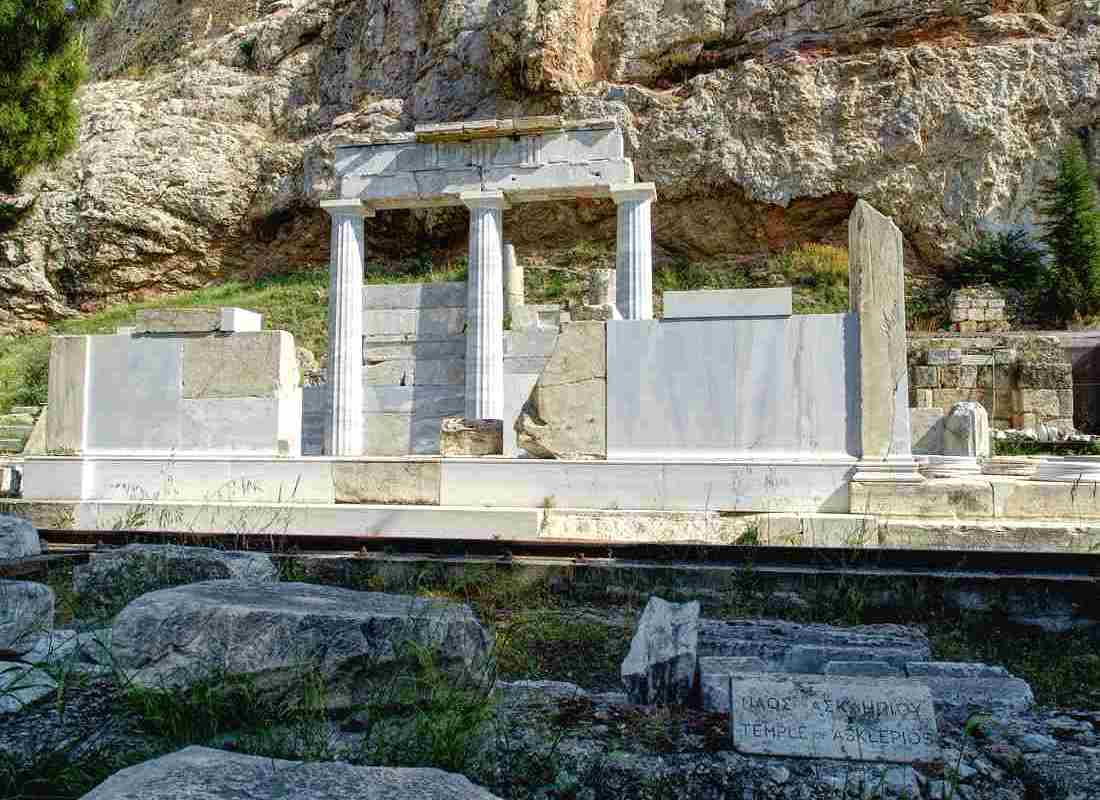
An ancient Greek temple dedicated to Asclepius, the founder of medicine. It was founded during the Peloponnesian War (431-404 B.C.) and perhaps its appearance was connected with the plague, because of which Athens was half deserted from 429 to 427. In Athens Asklepion was built on the initiative of a certain Telemachus of Acharnet in 420-419 BC. Asklepiones were not only religious buildings, but also medical institutions. In essence, the temple served as a hospital, much like a hospital in modern times. Asklepions had a significant impact on the development of medicine in ancient Greece. The priests of Asklepion, Asklepiades were engaged in the treatment of the sick. At the initial stages it consisted in performing certain rituals. The patient had to spend the night in Asklepion, after which he had to tell about his dreams to the priest and on the basis of the dream the treatment was prescribed. It was also the duty of the priests to draw up tables (patient's book), which described the patient's illnesses and the therapeutic measures taken and what results they led to. Thus, the Asklepiads contributed to the accumulation of medical knowledge in the temples, which were called Asklepions, in honor of their founder Asclepias.
How to get to the Temple of Asclepius
Theatre of Dionysus
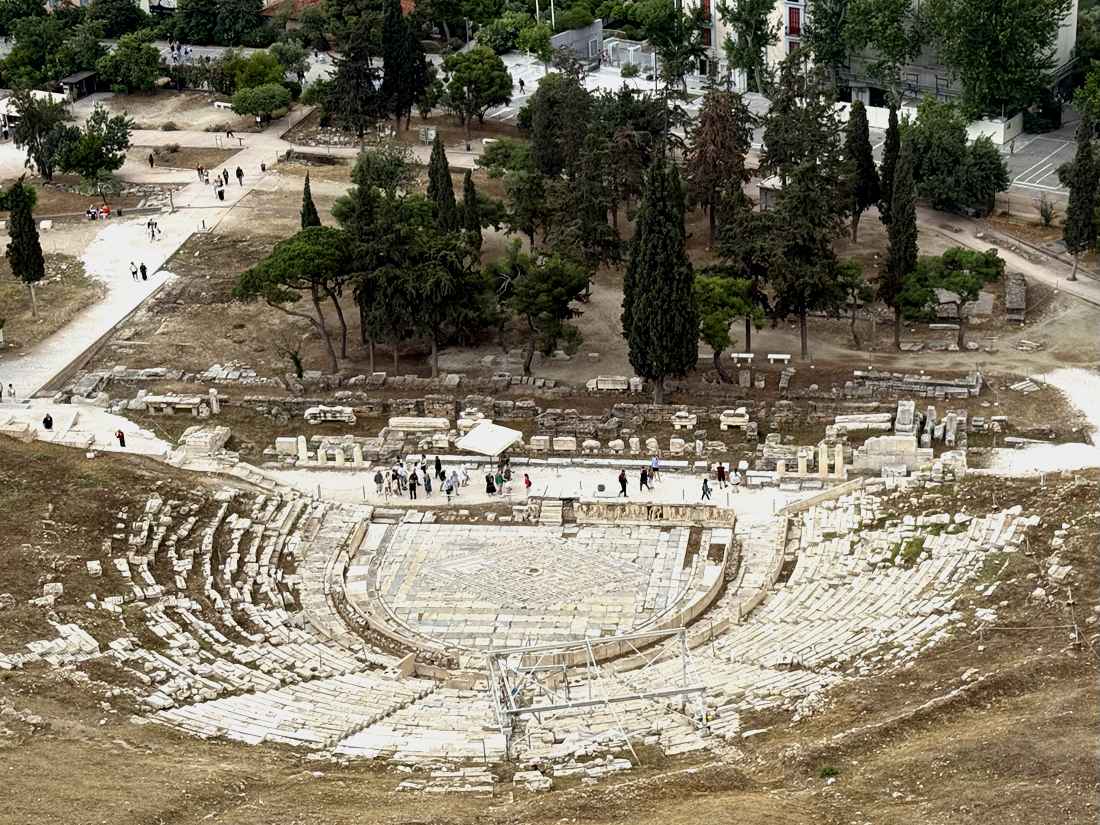
The theater is located on the slope of the Acropolis of Athens and is one of the oldest theaters in the world, built of wood in the 5th century B.C. It was the site of the greatest dramatic competitions held twice a year in honor of the Minor and Great Dionysia. During the Great Dionysias, theatrical competitions were held, in which authors of tragedies and comedies competed. The results were recorded in didaskalia, which were kept in the Athenian archives. The theater was reconstructed around 326-325 BC, replacing the wooden structures with marble ones. The stone seats in 67 rows accommodated up to 17,000 spectators, nearly half the population of Athens. The theater remained open and performances were held under natural light. The seats of honor, including seats for high-ranking spectators, were in the front rows. One of the seats in the second row belonged to Emperor Hadrian. In the first century AD the theater was rebuilt for gladiatorial fights, which explains the presence of a curb in front of the first row. One of the features is a sculptural frieze from the time of Nero depicting satyrs.
How to get to the Theatre of Dionysus
Odeon of Herodes Atticus
The Odeon is an ancient theater that represents a true gem of Athens' cultural heritage. Odeon of Herodotus Atticus is often confused with the equally famous Dionysus Theater, which is located 240 meters away and despite the recognizability of the structure, its history is not well known. The Odeon of Herodotus Atticus is one of the youngest monuments that is used for its intended purpose today and is the main stage of the annual Athens Festival. The Odeon was built in the 2nd century AD next to the Stoa of Eumenes, although they were built four centuries earlier, but the theater merged with them in perfect harmony. Athenian aristocrat Herodotus Atticus, wishing to honor the memory of his wife Aspasia Anna Rigilla, allocated funds for the construction of the theater and named it after her, but later the theater was renamed the Odeon. The theater in its original form was covered with a wooden roof with 32 rows of seats and could seat about 5,000 spectators. Like most theaters of the Roman era the orchestra was semicircular in shape and the stage had three floors, two of which are still in use today. The theater for a long time was almost destroyed and almost disappeared, but in 1857 its remains were discovered during archaeological excavations. It acquired its modern appearance only in the middle of the 20th century, after extensive restoration work. In 1950, the seats and stage were restored, and since then it has hosted theater, dance and music festivals every year from June to September.
How to get to Odeon of Herodes Atticus
Stoa of Eumenes
The Stoa of Eumenes, located between the Odeon of Herodotus Atticus and the Theater of Dionysus, was built on a hillside and named after its builder Eumenes II. His brother Attalus II, built the Stoa of Attalus on the Athenian agora and probably both buildings were designed by the same architect. The structure had two floors and was 46 meters longer than the Stoa of Attalus. Unlike the latter, the Stoa of Eumenes had no rooms, indicating that it was intended for strolling rather than for business meetings and trade. Originally clad in marble, its arcades were built into the Byzantine defense wall in 1060 and are still in place today. The building was a two-story structure with Doric columns on the outside, Ionic columns on the inside, and Pergamon-style capitals on the upper tier.
Socrates Prison
The prison of the philosopher Socrates is located at the foot of Philopappou Hill. The caves of the carved structure are associated with the famous philosopher. Socrates was imprisoned and spent 30 days here awaiting his death sentence. In 399 BC, the 70-year-old philosopher was charged with not honoring the gods and seducing youth. A jury of 500+1 people passed a verdict with 221 votes in favor of acquittal and 280 against. After the verdict, Socrates' friend Apollodorus weeping said, I find it especially hard that you are sentenced to death unjustly. To which Socrates replied, it would have been more pleasant to see that I would have been sentenced justly. The court gave Socrates the right to choose his fate, to which he replied, instead of punishing me, the government should thank me and feed me free for the rest of my life. We do not know what death is and it is not logical to fear it. Before he died, he said, “It's time for us to leave, for me to die and you to live.” And no one knows where it's best but God. It is not known whether this is the same cave where Socrates was or whether it is a dwelling house or a bathhouse. But one way or another, it is certainly worth seeing this dungeon and remembering this extraordinary man.
Philopappa Hill
A hill about 147 meters high, covered with pine and olive trees, is located southwest of the Acropolis. Between this hill and Pnyx was the road leading south to the bay of Faliro and Piraeus. In the 2nd century it was known as the Hill of the Muses and according to legend there was the tomb of the poet Museus, a pupil of Orpheus. On the hill there are the remains of fortification towers dating back to the time of Demetrius II of Aetolia (239-229 BC). On the western slope of the hill one can see the ruins of buildings, wells and water tanks carved directly into the rock, while on the eastern slope there are the remains of buildings, including the so-called “Prison of Socrates”. The hill got its modern name thanks to the Philopappus monument, erected in honor of Gaius Julius Antiochus Philopappus. He was a member of the dynasty that ruled in Commagene, a kingdom absorbed into the Roman Empire. While exiled to Athens Philopappus used his wealth to improve the city. After his death in 116, the Athenians erected a monument to him. During the Francocracy, the hill was called Sengio. In 1687, Venetian artillery stationed on the hill was ordered by Francesco Morosini to bombard the Parthenon, which housed the Turks' armory. In 1965, an outdoor theater was opened on the western slope of the hill, initiated by Dora Stratu, which became a venue for dance evenings.
Acropolis Museum
One of the most important archaeological museums in Athens, dedicated to the treasures of the Acropolis of Athens. Located at the foot of the legendary hill, the museum combines ancient heritage and modern architecture, offering a unique journey into the world of ancient civilizations. Opened in 2009, it was designed by architect Bernard Tschumi to create the perfect setting to showcase the artifacts found on the Acropolis. Its collection includes marble fragments of the Parthenon, ancient sculptures, ceramics, reliefs and other artifacts spanning from the Mycenaean era to Late Antiquity. A special feature of the museum is the glass floors, through which you can observe the archaeological excavations, as well as a panoramic hall of the Parthenon, where the marble friezes are placed according to their original location on the temple. The museum has created an interactive environment that immerses visitors in the atmosphere of ancient Athens and allows them to better understand its history and culture.
How to get to the Acropolis Museum
Arch of Hadrian
A triumphal arch 18 meters high, located on Queen Amalia Avenue. It was erected in 131 AD by the Athenians in honor of the Roman Emperor Hadrian. The arch served as a symbolic passage between the old city and the new Roman part of Athens, built by order of the emperor. The structure is made entirely of Pentelian marble without the use of cement. On the lower level of the Arch there are two inscriptions facing each other, but placed on opposite sides. On the southeastern side you can read: “This is the city of Hadrian, not Theseus”, and on the northwestern side, facing the Acropolis, it says: “This is Athens, the ancient city of Theseus”.
Temple of Olympian Zeus
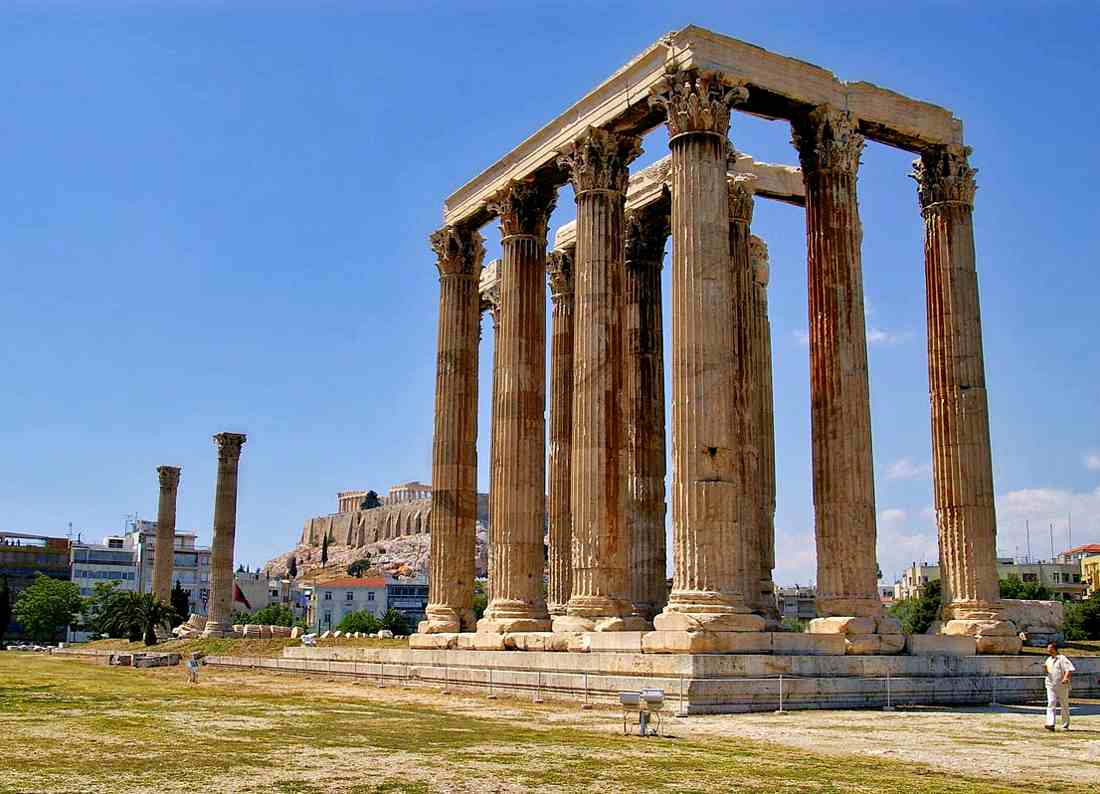
The Temple of Zeus of Olympia is the largest temple in Greece, built from the 6th century BC to the 2nd century AD. According to legend, the temple was built on the site of the sanctuary of the mythical Deucalion. The construction of the temple was begun during the tyranny of Pisistratus in 515 BC. The Athenian democracy had little interest in the temple; Themistocles used parts of it for a defensive wall linking Athens with Piraeus (its excavated section can be seen next to the temple). In 175-164 BC the construction was continued by Antiochus IV, Epiphanes, king of Syria. In 84 B.C., the Roman dictator Sulla removed several carved capitals from the columns and used them to build the temple of the Roman equivalent of Jupiter of Capitol. The temple was not completed until 650 years after construction began, under the Roman Emperor Hadrian, an admirer of Greek culture. The opening of the new temple, dedicated by Hadrian to Zeus the Olympian, was timed to coincide with the emperor's second visit to Athens in 132.
How to get to the Temple of Zeus Olympios
Panathenaic Stadium
Kalimarmaro or Panathinaiko Stadium is located in the Pagrati neighborhood. The stadium hosted the first modern Olympic Games in 1896. The remains of the ancient building were excavated and rebuilt in the mid-19th century with funds from the Greek patriot Evangelis Zappas. With his support, the stadium hosted the competitions of 1870 and 1875. The second major phase of works was carried out in 1895 for the first modern Olympic Games with the financial assistance of Georgios Averoff (his marble statue now stands at the entrance). Since the stadium in its modern form was built only at the beginning of the revival of the Olympic Games it was built according to the old model (in particular its running tracks do not meet the modern accepted standards). The stadium of 50 horizontal marble rows seats about 80,000 spectators.
To leave your comment please log in or register.
Related publications
You may also be interested in similar information


